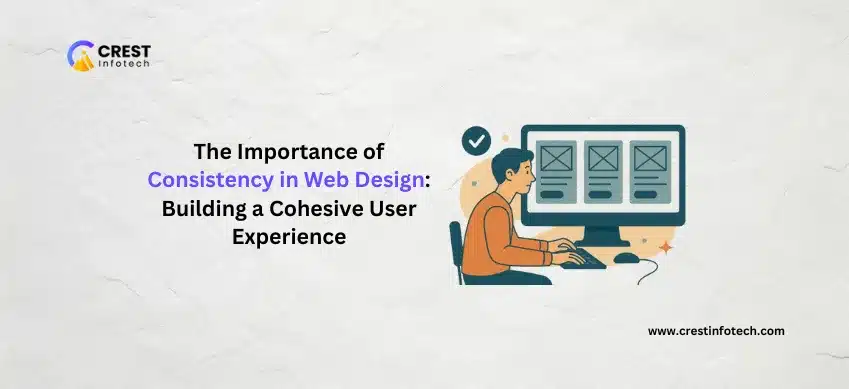Consistency in web design isn’t just about aesthetics — it’s about creating a predictable, reliable, and seamless experience for users. When design elements are consistent across your website, users can navigate more easily, build trust in your brand, and take action with confidence.
Here’s how to build a cohesive web experience through consistent design practices.
1. What Is Design Consistency?
Design consistency means using the same visual and functional elements throughout your site.
- Visual consistency: Fonts, colors, button styles, and layout spacing stay the same
- Functional consistency: Navigation, forms, and user interactions behave predictably
- Content consistency: Tone, structure, and formatting of text remain uniform
2. Strengthen Your Brand Identity
A consistent design reinforces your brand across every page.
- Use your brand’s color palette and typefaces throughout the site
- Include your logo in a predictable location (usually top-left)
- Ensure images, icons, and illustrations match your brand style
“Consistency in design leads to brand recognition — which builds trust and loyalty.”
3. Improve Usability and User Flow
Users shouldn’t have to relearn how your website works on every page.
- Keep your navigation menu, headers, and footers in the same position site-wide
- Use the same styling for clickable elements like buttons and links
- Maintain layout patterns (e.g., image left, text right) for familiar content structures
4. Reduce Cognitive Load
The more consistent your interface, the less users have to think.
- Limit your use of different fonts and colors to a small, cohesive set
- Standardize your spacing, padding, and alignment for a clean layout
- Use templates for similar pages (e.g., blog posts, product pages) to streamline design
5. Build Trust Through Professionalism
Visual inconsistency can make a website look unprofessional or even suspicious.
- Broken patterns: Users may feel uncertain about site reliability
- Mixed styles: Makes your brand feel scattered or outdated
- Consistent design: Reflects attention to detail and brand integrity
“Users may not notice perfect design — but they will notice when it’s inconsistent.”
6. Make Future Updates Easier
When your design system is consistent, updates and scaling become simpler.
- Use reusable components and design templates
- Apply global styles through CSS or a design framework
- Reduce maintenance time by avoiding one-off styles and layouts
Final Thoughts
Consistency is a foundational principle of great web design. From layout and typography to functionality and branding, every part of your site should work together seamlessly to support your user’s journey.
When your site feels predictable, intuitive, and aligned — users trust it more, stay longer, and convert more often. And that’s the power of consistency.



